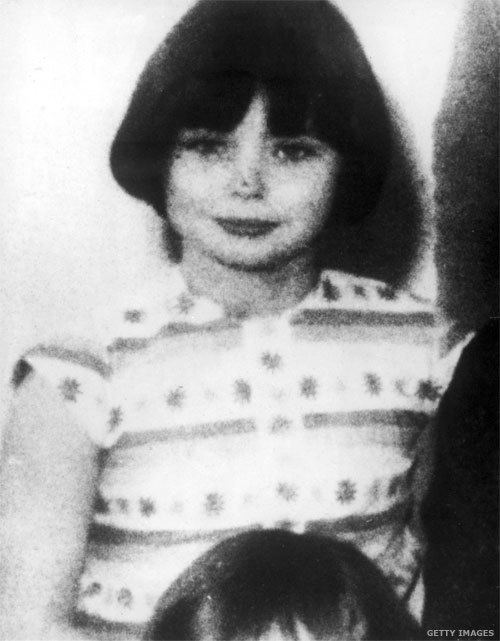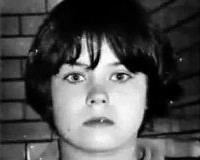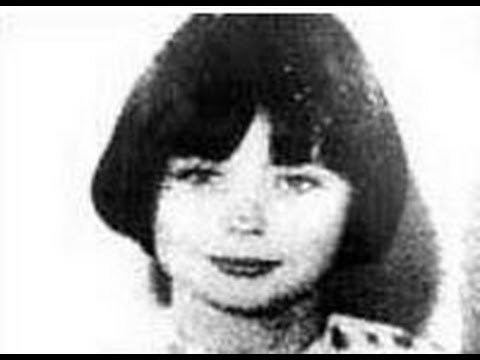Name Mary Bell Children 1 Parents Betty McCrickett | Criminal penalty Prison Date 1968 Killed 2 | |
 | ||
Similar People Eric Smith, Gitta Sereny, Josh Phillips, Jesse Pomeroy, George Stinney | ||
Other names The Tyneside Strangler | ||
The mary bell case
Mary Flora Bell (born 26 May 1957) is an English woman who, in 1968, aged 10–11, strangled to death two younger boys in Scotswood, an inner-city suburb of Newcastle upon Tyne. She was convicted in December 1968 of the Manslaughter of Martin Brown (aged 4) and Brian Howe (aged 3).
Contents
- The mary bell case
- Reinhold Bertlmann talks to Mary Bell
- Early life
- Killings
- Conviction and imprisonment
- Life after prison
- Books about the case
- References

Since her release from prison in 1980, she has lived under a series of pseudonyms. Her identity has been protected by a court order, which has also been extended to protect the identity of her daughter. In 1998, Bell collaborated with Gitta Sereny on an account of her life, in which she details the abuse she suffered as a child at the hands of her mother – a prostitute – and her mother's clients.

Reinhold Bertlmann talks to Mary Bell
Early life

Bell's mother Betty (née McCrickett) was a prostitute, who was often absent from the family home, travelling to Glasgow to work. Mary (nicknamed May) was her first child, born when Betty was 17 years old. It is not known who Mary's biological father was. For most of her life she believed it to be Billy Bell, a habitual criminal who was later arrested for armed robbery. Bell married her mother when Mary was a baby, but evidence gathered by Gitta Sereny suggests he met her after Mary was born.

Independent accounts from family members strongly suggest that Betty had more than once attempted to kill Mary and make her death look accidental during the first few years of her life. Her family was suspicious when Mary "fell" from a window, and when she "accidentally" consumed sleeping pills. On one such occasion, an independent witness saw Betty giving the pills to her daughter as sweets. Mary herself says she was subjected to repeated sexual abuse, her mother forcing her from the age of four to engage in sexual acts with men.
Killings
On 25 May 1968, the day before her 11th birthday, Mary Bell strangled 4-year-old Martin Brown in a derelict house. She was believed to have committed this crime alone. Between that time and a second killing, she and a friend, Norma Joyce Bell (1955–89; no relation), aged 13, broke into and vandalised a nursery in Scotswood, leaving notes that claimed responsibility for the killing. The police dismissed this incident as a prank.
On 31 July 1968, the two girls took part in the death, again by strangulation, of 3-year-old Brian Howe, in a wasteland in the same Scotswood area. Police reports concluded that Mary Bell had later returned to his body to carve an "M" into the boy's stomach. Mary Bell also used a pair of scissors to cut off some of Howe's hair, scratch his legs, and mutilate his penis.
An open verdict had originally been recorded for Brown's death as there was no evidence of foul play – although Bell had strangled him, her grip was not hard enough to leave any marks. Eventually, his death was linked with Howe's killing and in August 1968 the two girls were charged with two counts of manslaughter.
Conviction and imprisonment
On 17 December 1968, at Newcastle Assizes, Norma Bell was acquitted but Mary Bell was convicted of manslaughter on the grounds of diminished responsibility, the jury taking their lead from her diagnosis by court-appointed psychiatrists who described her as displaying "classic symptoms of psychopathy". The judge, Justice Cusack, described her as dangerous and said she posed a "very grave risk to other children". She was sentenced to be detained at Her Majesty's pleasure, effectively an indefinite sentence of imprisonment. She was initially sent to Red Bank secure unit in St. Helens, Lancashire – the same facility that would house Jon Venables, one of James Bulger's killers, 25 years later.
After her conviction, Bell was the focus of a great deal of attention from the British press and also from the German magazine Stern. Her mother repeatedly sold stories about her to the press and often gave reporters writings she claimed to be by her daughter. Bell herself made headlines when, in September 1977, she briefly absconded from Moor Court open prison, where she had been held since her transfer from a young offenders institution to an adult prison a year earlier. Her penalty for this was a loss of prison privileges for 28 days.
For a time, Bell also lived in a girls' remand home at Cumberlow Lodge in South Norwood (in a house built by Victorian inventor William Stanley).
Life after prison
In 1980, Bell, aged 23, was released from Askham Grange open prison after having served 12 years and was granted anonymity (including a new name), allowing her to start a new life. Four years later she had a daughter, born on 25 May 1984. Bell's daughter did not know of her mother's past until Bell's location was discovered by reporters in 1998 and she and her mother had to leave their house with bed sheets over their heads.
Bell's daughter's anonymity was originally protected only until she reached the age of 18. However, on 21 May 2003, Bell won a High Court battle to have her own anonymity and that of her daughter extended for life. Any court order permanently protecting the identity of a convict in Britain is consequently sometimes known as a "Mary Bell order".
In 2009, it was reported that Bell had become a grandmother.
Books about the case
Bell is the subject of two books by Gitta Sereny: The Case of Mary Bell (1972), an account of the killings and trial, and Cries Unheard: the Story of Mary Bell (1998), an in-depth biography based on interviews with Bell and relatives, friends and professionals who knew her during and after her imprisonment. This second book was the first to detail Bell's account of sexual abuse at the hands of her mother, a prostitute who specialised as a dominatrix, and her mother's clients.
The publication of Cries Unheard was controversial because Bell received payment for her participation. The payment was criticised by the tabloid press, and Tony Blair's government attempted to find a legal means to prevent its publication on the grounds that a criminal should not profit from his or her crimes, but the attempt was unsuccessful.
